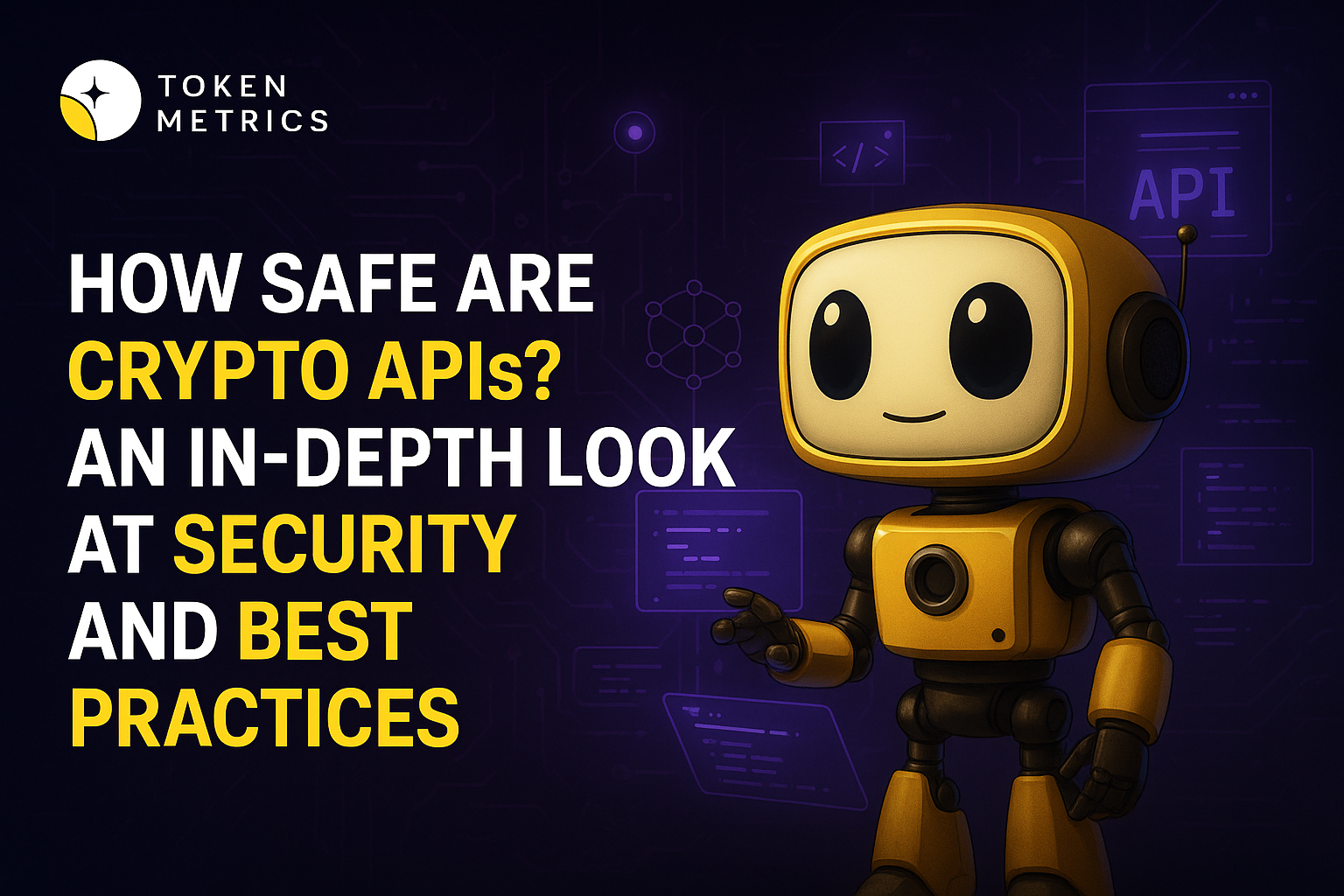
How to Find 100x Altcoins Before They Explode | Token Metrics Moonshot Guide

In the world of cryptocurrency, the term “moonshot” isn’t just slang—it’s the dream. A moonshot is that rare token that delivers 100x or even 1000x returns, turning small investments into massive profits. But the real question is: how do you find these altcoins before they explode?
In this guide, we’ll break down what moonshots are, how they work, and most importantly, how to use Token Metrics—the leading AI-powered crypto analytics platform—to discover hidden gems before the crowd catches on.
What Are Moonshot Altcoins?
Moonshots are low market cap altcoins with high growth potential. These tokens often start under the radar, trading at fractions of a cent, and then experience explosive price action fueled by community hype, technical breakthroughs, or big news.
Common Traits of Moonshot Altcoins:
- Market Cap < $50M – Small enough to grow exponentially
- High Volatility – Swings of 20–100% daily are not unusual
- Speculative Narrative – Often driven by trend cycles like AI, DePIN, or meme coin mania
- Community Driven – Strong social momentum via X (Twitter), Telegram, or Discord
- Limited Listings – Usually launched on decentralized exchanges (DEXs) before hitting major CEXs
These tokens carry high risk but also high reward. Timing and information are everything—and that’s where Token Metrics comes in.
How Moonshot Altcoins Work
The mechanics behind a moonshot typically follow a cycle of accumulation, hype, breakout, and profit-taking:
- Early Accumulation – Smart money (including whales and insiders) buys in at low prices.
- Volume Spike – Trading activity picks up as new investors notice price movements.
- Parabolic Move – Price jumps rapidly due to FOMO and social media hype.
- Peak & Correction – Early buyers take profits, causing volatility or sharp retracement.
Catching the token in Phase 1 or 2 is crucial. If you're entering during the parabolic move, the risk/reward ratio is much worse.
That’s why traders and investors rely on data and AI-powered tools like Token Metrics to identify moonshots before they explode.
How to Use Token Metrics to Find Moonshots
Token Metrics offers a dedicated Moonshots feature powered by machine learning models trained on thousands of historical signals. It helps you find high-potential altcoins before they go mainstream.

Here’s a step-by-step guide to finding moonshot tokens using Token Metrics:
✅ Step 1: Go to the Ratings Page
- From your Token Metrics dashboard, navigate to the “Ratings” tab.
- This is where tokens are scored using Trader Grade and Investor Grade, based on factors like:
- Technical indicators
- On-chain activity
- Market momentum
- Social sentiment
Trader Grade is especially important for identifying short-term opportunities and moonshot candidates.
✅ Step 2: Click on the “Moonshots” Tab
Inside the Ratings page:
- Click the “Moonshots” tab at the top.
- This filters tokens identified by the platform’s AI as having short-term explosive potential.
These are not random picks—they are selected based on:
- Sharp trader grade increases
- Unusual volume and price action
- Sentiment spikes
- Market cap vs. performance anomalies
The Moonshots page refreshes in real-time to capture fast-moving opportunities.
✅ Step 3: Review Key Metrics
Each token listed in the Moonshots section includes crucial data to guide your decisions:
- Trader Grade (with % change over time)
- 24-Hour Trading Volume – Helps gauge interest and momentum
- Market Cap – Smaller cap = higher potential upside
- Date of Entry – Know exactly when the token was flagged
- Live ROI Since Moonshot – See how it’s performed since it was listed
Want to see past winners? Just switch to “Past Moonshots” to view previous AI picks and how they performed over 7–14 days. Many tokens in this category have delivered 5x–20x returns in a matter of days.
✅ Step 4: Choose a Token to Explore
Click on any token from the list to open its Token Details Page.
Here, you can:
- View a real-time price chart
- Read a breakdown of fundamentals, including tokenomics, roadmap, and sector
- See top holders (whales, insiders, or project wallets)
- Review technical indicators, volume trends, and volatility
This deep-dive view gives you everything you need to make an informed decision—not just guesswork.
✅ Step 5: Buy in Seconds
Once you’ve done your due diligence:
- Click the “Buy” button directly on the Moonshots page.
- This opens a swap widget that connects to top DEXs.
- Choose your wallet, confirm the swap, and you’re done—no need to leave the platform.
This seamless process saves time and allows you to act quickly in a fast-moving market.
Why Token Metrics Is the Best Tool for Moonshot Hunting
Finding 100x altcoins is about timing, data, and confidence. Token Metrics gives you all three:
🔍 Data-Backed Confidence
No more relying on anonymous influencers or Telegram groups. Token Metrics backs every moonshot with quantifiable metrics.
🧠 AI-Powered Predictions
The platform’s models constantly analyze price, volume, sentiment, and chain activity to spot anomalies and early breakouts.
📈 Transparent Track Record
You can review past Moonshots and their ROI—transparency that few platforms offer.
💡 Trade-Ready UI
With integrated swap functionality, you can go from discovery to execution in under a minute.
Final Thoughts
Finding the next 100x altcoin is never easy—but with the right tools, your odds improve dramatically.
Moonshots are real, and they happen frequently in crypto. But they’re only lucrative if you find them early, analyze them rationally, and manage your risk.
With Token Metrics, you don’t have to chase hype—you can rely on real-time analytics, AI-powered ratings, and actionable insights to guide your moonshot hunting.
If you're serious about catching the next 100x gem, start using Token Metrics today.
🚀 Start your free trial and unlock the Moonshots tab at TokenMetrics.com

.svg)

Create Your Free Token Metrics Account

.png)




%201.svg)
%201.svg)


%201.svg)









.svg)




.png)